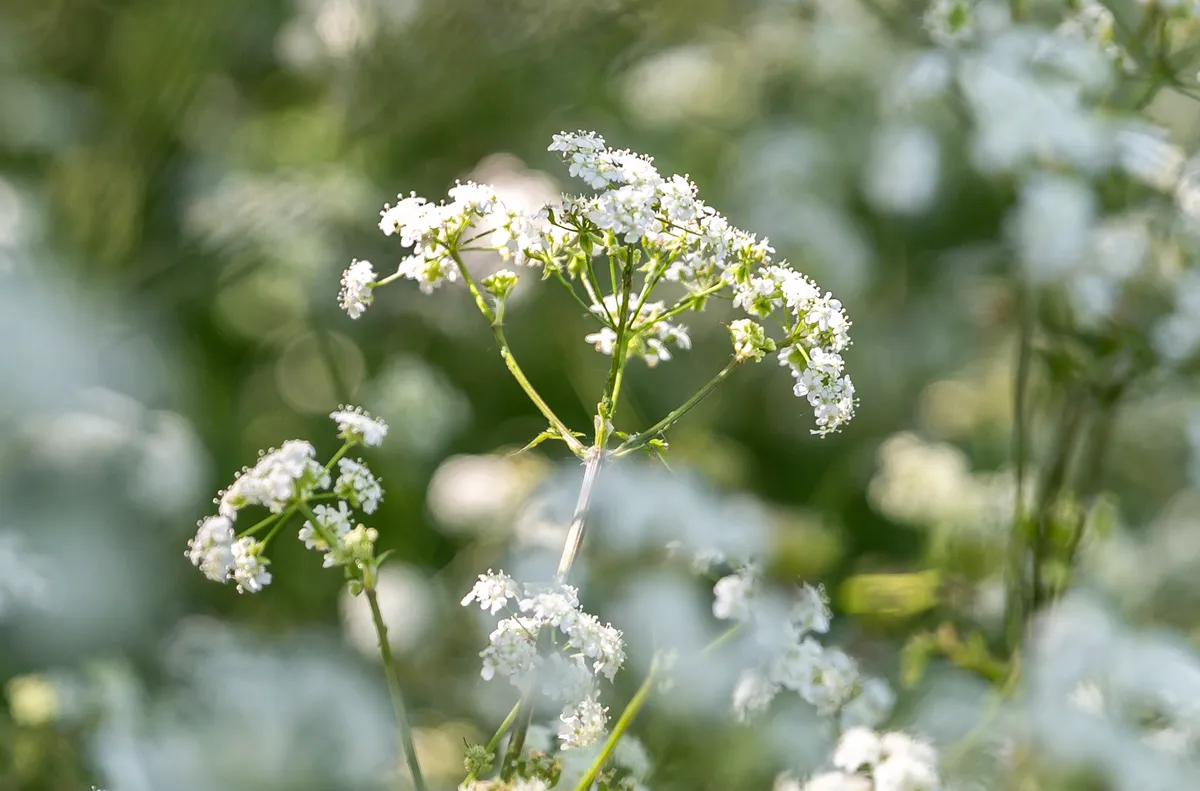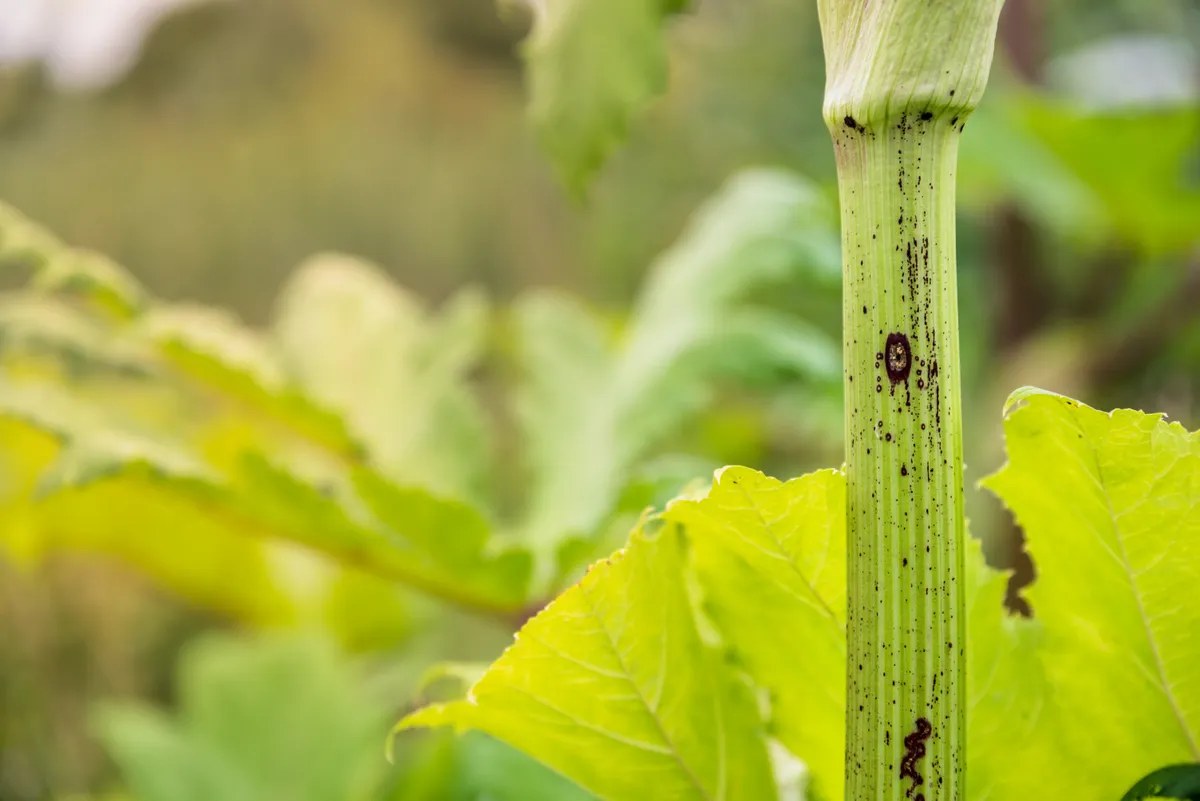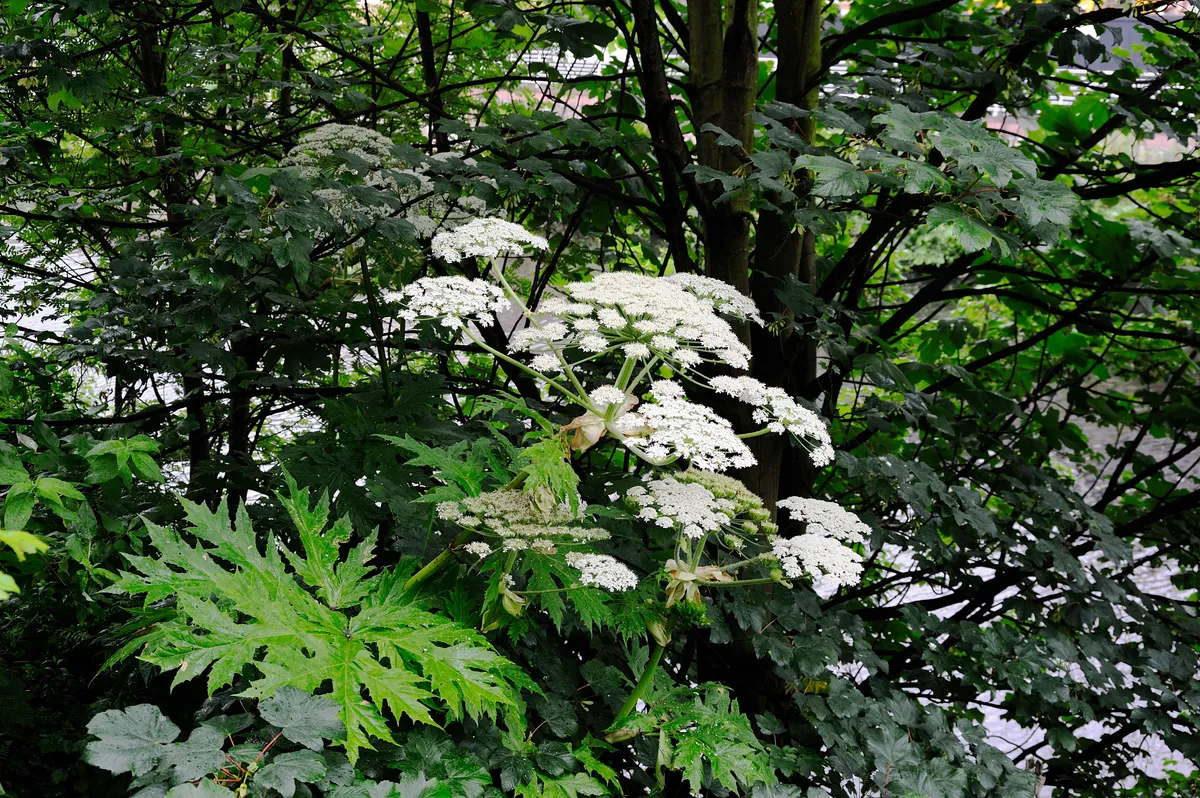Introduced to the British Isles as an ornamental plant in the 19th century, giant hogweed (Heracleum mantegazzianum) has built itself a fearsome reputation – and for good reason.
This enormous member of the umbellifer family contains furocoumarin, which, even after minimal contact, can cause the skin to react strongly to sunlight, leaving burns.
Learn how to identify giant hogweed using its leaves, flowers and stem with our species guide.
- Interested in learning more about Britain’s flora? Check out our guides to orchids, bluebells and ferns.
Umbellifers of Britain
What is an umbellifer? What is the difference between cow parsley and hemlock? Is giant hogweed dangerous? Find out the answers to all these questions and more with our guide to umbellifers.

How to identify giant hogweed
Giant hogweed can grow to an enormous size, often in excess of two metres and possibly as tall as five metres, with thick stems more than 8cm in diameter.
The leaves hang heavy like tired hands, deep green with pronounced lobes and jagged edges.
The stalk is hollow and deeply ridged, predominantly green but with reddish-purple splotches and stiff, white, pronounced hairs.

The umbels are vast, measuring up to 60cm across and made up of between 50 and 150 individual rays.
The white petals have a slightly more pungent, resinous aroma than hogweed or cow parsley and are more variable in size and shape. Those on the edges stretch out a little further than the central clusters in order to remain upright and in sight of the sun and passing pollinators.

Giant hogweed burns
Classed as an invasive species, giant hogweed can be difficult to control. Not least because the sap contains furocoumarin, which, even after minimal contact, can cause the skin to react strongly to sunlight, forming large, painful blisters. This is a process known as phytotoxicity and the reaction can begin within 15 minutes of contact and the effects last for several days.
Contact with giant hogweed should be avoided, particularly under strong sunlight.

Giant hogweed habitat and distribution
Giant hogweed is fond of damp habitats and is often found beside water courses. There it drops its seeds, many thousand from each plant, which might float off in the current then to colonise new areas.
Though local in its distribution giant hogweed is widespread and the seeds can remain dormant in the soil for up to 15 years.
Its sheer size can allow it to dominant other vegetation and the plant is resistant to frost.
